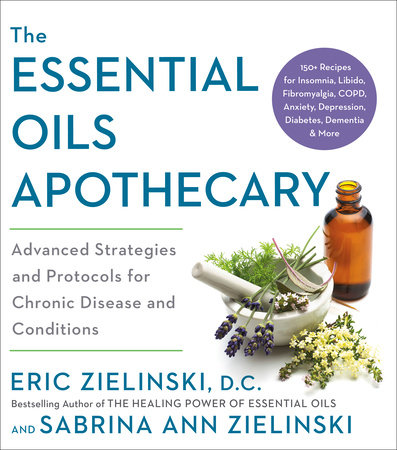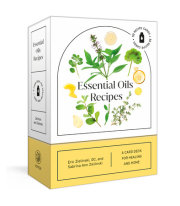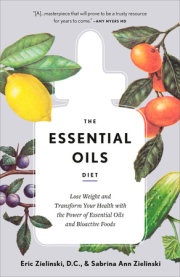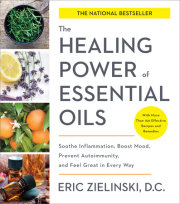Chapter 1A Closer Look at Chronic Disease“Behind every chronic illness is just a person trying to find their way in the world.” —Glenn Schweitzer
If you think about it, up until the pandemic turned our lives upside-down, twenty-first-century life was pretty nice for most of us. We live longer than our recent ancestors. We’re fairly active, even in our golden years. Our kids have been surviving their childhood and teenage years at an unprecedented rate. Cigarette smoking has reached an all-time low among adults in the United States.
But are we healthier? Do we live better? What about you: do you enjoy great health and a fulfilled life?
Modern medicine has been able to keep people alive, sure, but what kind of life is it? Obesity is at an all-time high, and diabetes keeps climbing higher up the list. Heart disease is still the number one killer of men and women. The growing suicide rate points to a serious lack of mental health care.
While modern medicine has been able to greatly reduce infectious diseases (though new strains have exposed some serious holes in that arena), it is very ineffective at preventing or reducing chronic diseases.
So when we say “chronic disease,” exactly what are we talking about?
It may come as a surprise, but despite all of our medical advances and our focus to unify governing health agencies across the globe, there is no consensus as to what defines a chronic illness.
For example, the Centers for Disease Control and Prevention (CDC) classifies seven health conditions as chronic disease: heart disease, cancer, chronic lung disease, stroke, Alzheimer’s disease, diabetes, and chronic kidney disease.
Whereas, the Centers for Medicare and Medicaid Services have a more extensive list of twenty-one chronic conditions, adding alcohol abuse, depression, and HIV/AIDS, but it leaves out obesity.
The World Health Organization (WHO) also has a more extensive list and includes various mental disorders, vision and hearing impairments, oral diseases, bone and joint disorders, and genetic disorders.
And Medline, the US National Library of Medicine premier bibliographic database, branches out to include neurological disorders such as multiple sclerosis, Parkinson’s disease, and epilepsy.
Not only is the list of chronic illnesses debated, but so are its qualifying definitions. The CDC defines a chronic disease as “conditions that last one year or more and require ongoing medical attention or limit activities of daily living or both.” Whereas Medline takes a more nebulous approach: “a long-term health condition that may not have a cure.”
To make matters even more complicated, chronic diseases appear under different headings. Sometimes the term noncommunicable diseases distinguishes itself from “communicable” or infectious diseases. Yet several chronic diseases have an infectious component, such as cervical cancer and liver cancer. Lifestyle-related disease is a term that emphasizes the contribution of diet, exercise, and other behaviors to the development of chronic diseases. Yet many chronic diseases are heavily triggered by environmental circumstances, which are not the result of our individual choices.
Why is all of this important?
For one thing, it is confusing to the public. Not having a clearly defined understanding of what chronic disease is and isn’t has led to widespread misunderstandings.
In fact, according to the WHO, there are several half-truths and common misunderstandings people across the globe share about chronic disease. Here’s a brief summary:
•“My grandfather smoked and was overweight—and he lived to ninety-six.” (Yes, this happens, but it is rare and not worth the risk of doing things you know are unhealthy.)
•Chronic disease affects rich people and wealthy countries. (On the contrary; the less affluent someone is, the more likely they are to develop a life-threatening chronic condition.)
•Mostly older people are affected. (Actually, nearly 50 percent of chronic disease deaths occur in people under seventy years of age.)
•Usually men are affected—think heart disease. (Not true. Men and women are equally at risk.)
•Being healthy and preventing chronic disease is “too expensive.” (Again, not true, and we’ll outline many budget-friendly options in this book.)
•We will all die one day, and getting a chronic disease is inevitable.
This last point is key. Nothing could be further from the truth, and this underlying suspicion that nothing can be done to prevent and successfully treat chronic disease is completely false.
For the sake of this book, we lean toward a WHO broad-stroke approach to defining chronic disease, its symptoms, and its management. Chronic disease:
•has its origins at young ages;
•takes decades to become fully established as epidemics;
•requires a long-term and systematic approach to treatment;
•and, most important, has many opportunities for prevention—even reversal.
Risk Factors for Chronic Diseases
All of the leading chronic diseases—arthritis, cardiovascular disease, cancer, chronic fatigue, COPD, fatty liver, obesity, osteoporosis, sleep disorders, and type 2 diabetes—are linked by common and preventable risk factors, according to the CDC and other global health authorities, including the following:
•Tobacco use and exposure to secondhand smoke
•Inadequate, unbalanced nutrition, including diets low in fruits and vegetables and high in sugar, sodium, and processed foods
•Sedentary lifestyle
•Alcohol abuse
There are other risk factors for most chronic diseases, as well, that have emerged from major landmark studies.
Chronic Inflammation
This occurs if the body’s normal inflammatory healing process does not end when it should, leaving your body in an unhealthy state of alarm that can hurt your physical and mental well-being. Over time, chronic inflammation may impair the function of your tissues and organs—a destructive condition that leads to many chronic diseases.
Toxic Burden
Indoor air pollution, fluoridated water, contaminants, pesticides, chemical cleaners, drugs, and other environmental exposures can accumulate in your tissues and cause disease.
Genotoxins
These are chemicals or agents, usually found in the environment, that can cause damage to genetic material and are also involved in many chronic diseases, such as liver disease, brain illnesses, cardiovascular disorders, diabetes, arthritis, cancer, chronic inflammation, and aging.
Over-Sanitization
People who live in areas with high levels of sanitation do not obtain the normal exposure to microbes, pollen, and other microscopic elements in the environment. The lack of that exposure negatively affects the development of the immune system, making people more susceptible to emerging viruses and even Alzheimer’s disease.
Stress
It’s widely known that stress damages health in many ways. It interferes with sleep, leads to a weakened immune system, causes digestive problems and obesity, and increases your risk of depression.
EMF Exposure
Cell phones, microwaves, Wi-Fi routers, and other devices are all forms of electromagnetic frequency (EMF) exposure, which emits radiation that can damage the immune system. Overexposure to even low levels of radiation from these sources has been known to trigger sleep disorders, headaches, fatigue, memory problems, cognitive problems, and many other health problems.
Comorbidities
This refers to other chronic diseases that make you more susceptible to additional chronic diseases. Remember that kids’ song explaining how the bones in the body connect? We can still hear it in our heads—“The foot bone connects to the ankle bone. . . .” Well, the same goes for chronic disease. For example, obesity and type 2 diabetes can also be linked to cancer, arthritis, and chronic pain and will put you at risk of developing every chronic disease known to man. And recent research has linked type 2 diabetes with Alzheimer’s and other dementias.
Copyright © 2021 by Eric Zielinski DC. All rights reserved. No part of this excerpt may be reproduced or reprinted without permission in writing from the publisher.










